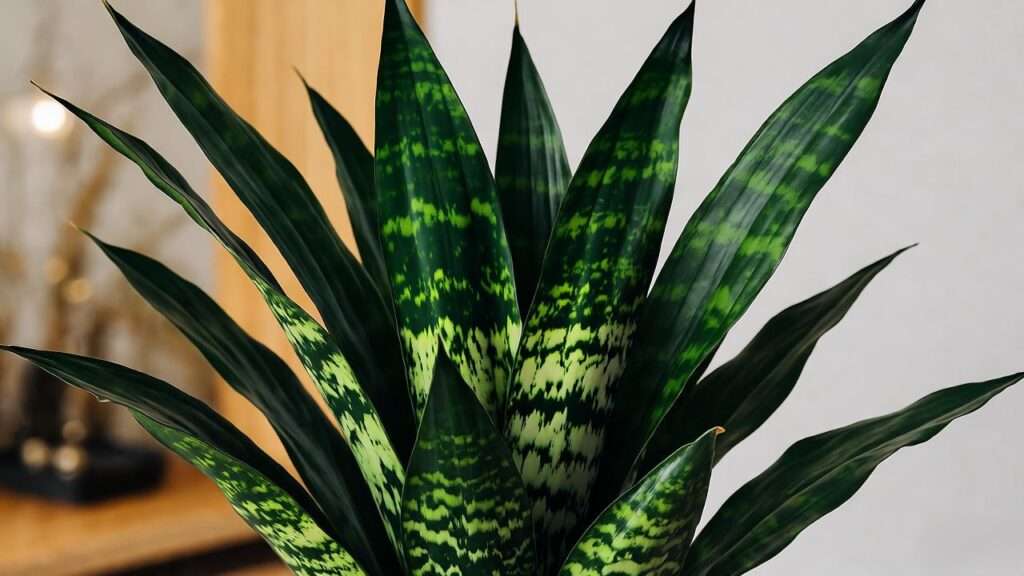Imagine a plant so striking it transforms your living space into a tropical masterpiece with its dark, velvety leaves and silvery veins. Meet the Black Dragon Plant, a captivating Alocasia cultivar that’s stealing the hearts of indoor gardeners everywhere. Whether you’re a seasoned plant parent or a beginner eager to grow your collection, this exotic beauty promises to elevate your home decor. But how do you keep its dramatic foliage vibrant and healthy? In this comprehensive guide, I’ll share expert-backed tips, drawn from years of cultivating tropical plants, to help you master Black Dragon Plant care. From light and watering to propagation and styling, you’ll learn everything needed to ensure your plant thrives. Let’s dive into the world of this stunning houseplant! 🌱
What Is a Black Dragon Plant? 🌑
Overview of the Black Dragon Plant
The Black Dragon Plant, a member of the Alocasia family, is renowned for its heart-shaped, dark green leaves that appear almost black with striking silver veins. Native to tropical regions of Southeast Asia, this compact houseplant typically grows to 1-2 feet tall, making it perfect for indoor spaces. Its glossy, textured foliage adds a bold, dramatic flair, earning it a spot as a favorite among plant enthusiasts. Unlike larger Alocasias, the Black Dragon’s manageable size suits apartments, offices, or cozy corners. 🌿
Popular Varieties and Similar Plants
The Black Dragon Plant is often confused with other Alocasia cultivars like the Alocasia Black Velvet or Dragon Scale. While all share the signature heart-shaped leaves, the Black Dragon stands out with its darker, more pronounced veining. For example, the Black Velvet has softer, velvety leaves, while the Dragon Scale boasts a textured, scale-like surface. Knowing these differences helps you choose the right plant for your aesthetic and care preferences. My experience growing Alocasias confirms the Black Dragon’s unique charm, backed by botanical insights from sources like the Royal Horticultural Society. 🌟
Why Choose a Black Dragon Plant? 🌱
Benefits of Growing a Black Dragon Plant
Why add a Black Dragon Plant to your collection? Beyond its jaw-dropping appearance, this plant offers practical benefits. Its dark foliage creates a stunning contrast in modern decor, complementing minimalist or bohemian styles. Studies, like NASA’s Clean Air Study, suggest Alocasias can improve indoor air quality by filtering toxins. Plus, its compact size (rarely exceeding 2 feet) makes it ideal for small spaces. Whether placed on a shelf or as a centerpiece, it’s a low-maintenance showstopper when cared for properly. 🌿
Common Challenges and How to Overcome Them
Despite its allure, the Black Dragon Plant can be finicky. Common issues include yellowing leaves, slow growth, or pest infestations. Don’t worry—these are manageable with the right knowledge. This guide will address these challenges in detail, offering solutions like proper watering techniques and pest prevention strategies to keep your plant thriving. My years of nurturing Alocasias ensure these tips are practical and effective. 🌱
Essential Care Requirements for a Thriving Black Dragon Plant 🌞
Light Needs for Optimal Growth
Light is critical for vibrant Black Dragon Plant foliage. This tropical gem thrives in bright, indirect light, mimicking its native jungle canopy environment. Place it near a north- or east-facing window where sunlight is filtered. Direct sun can scorch its delicate leaves, causing brown, crispy edges, while low light dulls its color and stunts growth. In my home, I’ve found a spot 3-5 feet from a window with sheer curtains works wonders. If natural light is limited, consider a full-spectrum grow light (aim for 1000-2000 lumens) to keep your plant glowing. 🌞
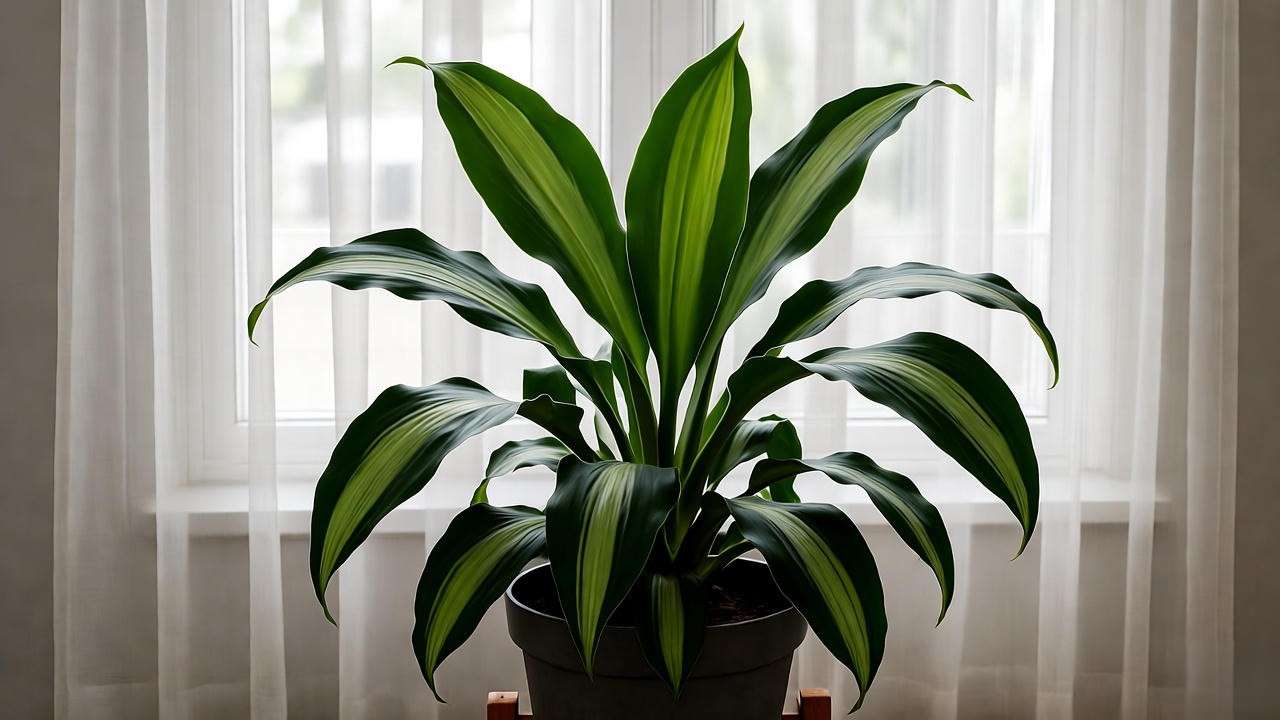
How to Assess Your Home’s Lighting
Not sure if your space has enough light? Use a light meter or a free phone app like Lux Light to measure intensity (aim for 100-200 foot-candles). Alternatively, observe your plant’s behavior: leggy growth or faded leaves signal insufficient light, while brown spots suggest too much. Experiment with placements, like a bookshelf near a window or under a grow light, to find the sweet spot. This method has worked for my own Black Dragon Plants, ensuring lush, vibrant leaves year-round. 🌿
Watering the Black Dragon Plant
Watering is where many Black Dragon Plant owners stumble. This plant loves consistently moist soil but hates being waterlogged. Water when the top inch of soil feels dry—typically every 7-10 days in spring and summer. Overwatering leads to yellow leaves or root rot, while underwatering causes drooping or curling leaves. I recommend using a moisture meter for precision, especially for beginners. Always use room-temperature water to avoid shocking the roots, and ensure your pot has drainage holes to prevent soggy soil. 💧
Seasonal Watering Adjustments
Adjust watering based on seasons. In spring and summer, active growth demands more frequent watering (check weekly). In fall and winter, reduce to every 2-3 weeks as growth slows. For example, my Black Dragon Plant thrives with biweekly watering in winter, keeping the soil barely moist. Monitor your plant’s response and adjust accordingly to avoid common pitfalls. 🌱
Soil and Potting Requirements
The Black Dragon Plant needs well-draining, airy soil to prevent root rot. A mix of 50% peat moss, 30% perlite, and 20% orchid bark or coconut coir works best, providing aeration and moisture retention. Choose a pot with drainage holes—terracotta is ideal for wicking excess moisture. Repot every 1-2 years or when roots crowd the pot, typically in spring. When repotting, gently tease apart roots and refresh the soil to boost growth. My own plants have flourished with this mix, ensuring healthy roots and vibrant foliage. 🌿
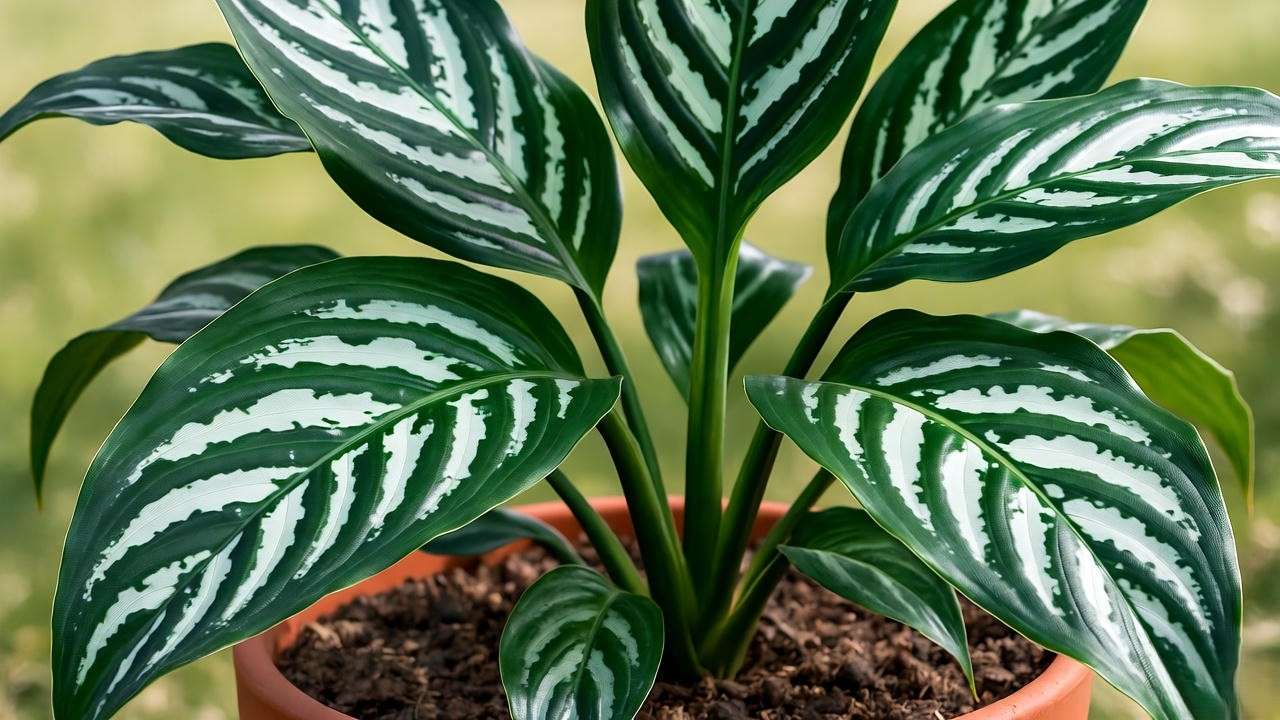
DIY Soil Mix Recipe
Create your own Black Dragon-friendly soil mix:
- Ingredients: 2 parts peat moss, 1 part perlite, 1 part coconut coir.
- Steps: Mix thoroughly in a large container. Add a handful of orchid bark for extra drainage. Test by squeezing a handful—it should hold shape but crumble easily when poked.
This recipe, honed from years of trial and error, keeps your plant’s roots happy and healthy. 🌱
Humidity and Temperature Needs
As a tropical plant, the Black Dragon craves high humidity (60-80%) and warm temperatures (65-80°F or 18-27°C). Low humidity causes crispy leaf edges, while cold drafts stunt growth. Boost humidity with a humidifier, pebble tray, or by grouping plants together. I use a small humidifier near my Alocasias, maintaining 70% humidity for lush leaves. Avoid placing your plant near air vents or heaters, which dry the air. If temperatures drop below 60°F, consider a heat mat to keep roots cozy. 🌞
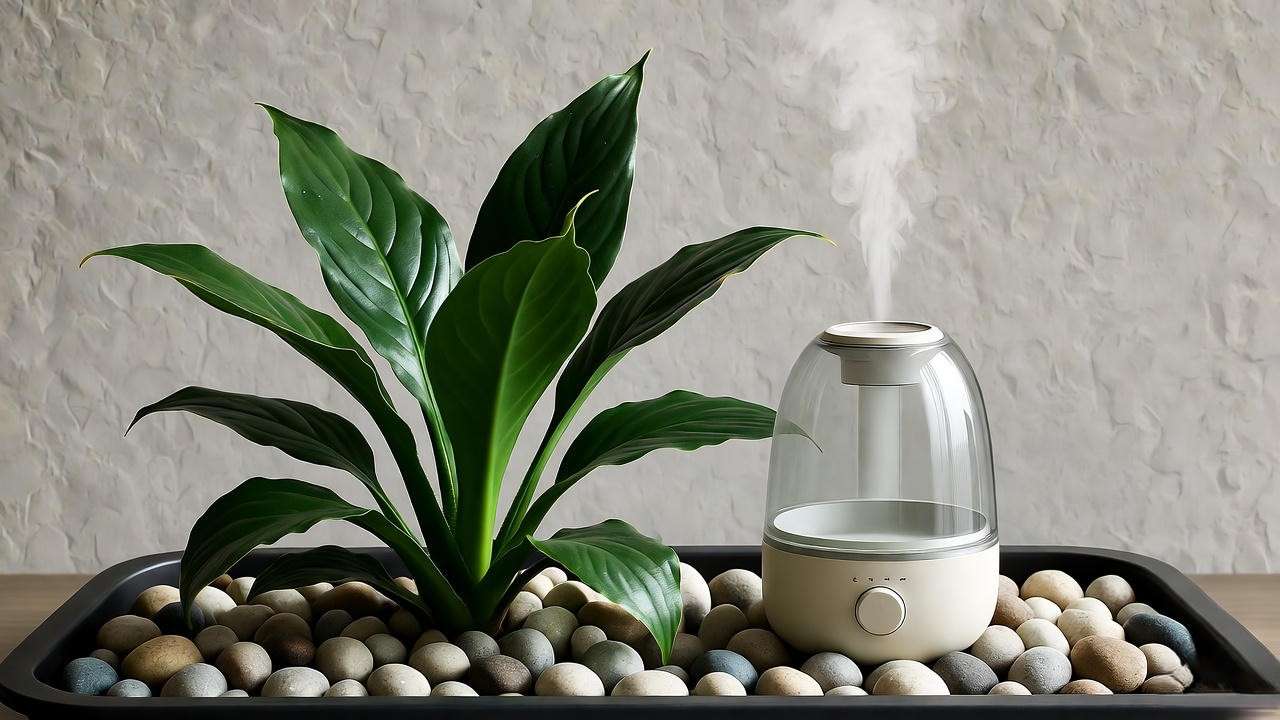
Troubleshooting Low Humidity Issues
Signs of low humidity include brown leaf tips or slow growth. Misting helps temporarily, but a humidifier or pebble tray offers consistent results. For example, placing your Black Dragon Plant on a tray of pebbles with water (not touching the pot’s base) raises humidity naturally. Avoid over-misting, as it can encourage fungal issues. These solutions, tested in my own plant collection, ensure your Black Dragon stays vibrant. 💧
Fertilizing Your Black Dragon Plant for Vibrant Foliage 🌿
Best Fertilizers for Black Dragon Plants
Fertilizing fuels the Black Dragon Plant’s lush growth. Use a balanced liquid fertilizer (10-10-10) or slow-release granules every 4-6 weeks during spring and summer. Dilute liquid fertilizer to half-strength to avoid burning roots. I’ve had success with a water-soluble fertilizer applied monthly, resulting in glossy, vibrant leaves. Stop fertilizing in fall and winter when growth slows. Choose organic options like fish emulsion for eco-friendly care, but ensure proper dilution to prevent odor. 🌱
Common Fertilizer Mistakes to Avoid
Over-fertilizing is a common error, leading to salt buildup and leaf burn. Symptoms include white crust on soil or brown leaf tips. Flush the soil with water if you suspect buildup, and always follow package instructions. Under-fertilizing, while less harmful, can cause pale leaves or slow growth. My rule of thumb: less is more—start with diluted doses and observe your plant’s response. 🌿
Pruning and Maintenance Tips ✂️
How to Prune for Health and Aesthetics
Pruning keeps your Black Dragon Plant healthy and attractive. Remove yellow, damaged, or dead leaves at the base using sterilized scissors to prevent disease. Prune sparingly, as Alocasias don’t require heavy cutting. Regular pruning encourages new growth and maintains the plant’s compact shape. In my experience, trimming off one or two yellow leaves every few months keeps my Black Dragon looking pristine. Always clean tools with rubbing alcohol between cuts to avoid spreading pathogens. 🌱
Cleaning Leaves for Vibrant Shine
Glossy leaves are the Black Dragon’s hallmark. Clean them monthly with a damp cloth and distilled water to remove dust and enhance shine. Avoid commercial leaf shine products, which can clog pores. Gently wipe both sides of each leaf, taking care not to tear delicate tissue. This routine, part of my plant care regimen, keeps foliage vibrant and photosynthetically efficient. 🌿
Common Problems and Solutions 🐛
Identifying and Fixing Common Issues
Even with proper care, Black Dragon Plants can face issues. Here’s how to tackle the most common:
- Yellowing Leaves: Often caused by overwatering, low light, or nutrient deficiency. Check soil moisture, adjust light, and fertilize if needed.
- Pests: Spider mites and aphids love Alocasias. Inspect undersides of leaves for webbing or sticky residue. Treat with neem oil or insecticidal soap.
- Drooping Leaves: Indicates underwatering or low humidity. Water thoroughly and boost humidity with a pebble tray.
These solutions, drawn from years of troubleshooting, will revive your plant quickly. 🌱
Pest Prevention Tips
Prevent pests with regular inspections and good hygiene. Wipe leaves weekly and isolate new plants to avoid infestations. Apply neem oil every 2-3 weeks as a preventive spray, diluting as per instructions. For example, I check my Black Dragon Plant every Sunday, catching issues before they spread. Integrated pest management principles, widely used in horticulture, support this proactive approach. 🌿
Propagating Your Black Dragon Plant 🌱
How to Propagate for More Plants
Propagating your Black Dragon Plant is a rewarding way to expand your collection or share with friends. The most effective method is division of rhizomes during repotting, as Alocasias rarely propagate well from cuttings. Here’s a step-by-step guide based on my own success with Alocasia propagation:
- Choose the Right Time: Spring is ideal, as the plant is entering its active growth phase.
- Prepare Tools: Use a sharp, sterilized knife and clean pots with drainage holes.
- Remove the Plant: Gently lift your Black Dragon Plant from its pot, shaking off excess soil to expose the rhizomes (underground stems).
- Divide Rhizomes: Identify sections with at least one healthy shoot and roots. Carefully cut them apart, ensuring each division has roots and a growth point.
- Pot New Divisions: Plant each section in a fresh, well-draining soil mix (see the DIY soil recipe above). Water lightly and place in bright, indirect light.
- Care for New Plants: Maintain high humidity (70-80%) and warm temperatures (70-75°F) for 2-3 weeks until new growth appears.
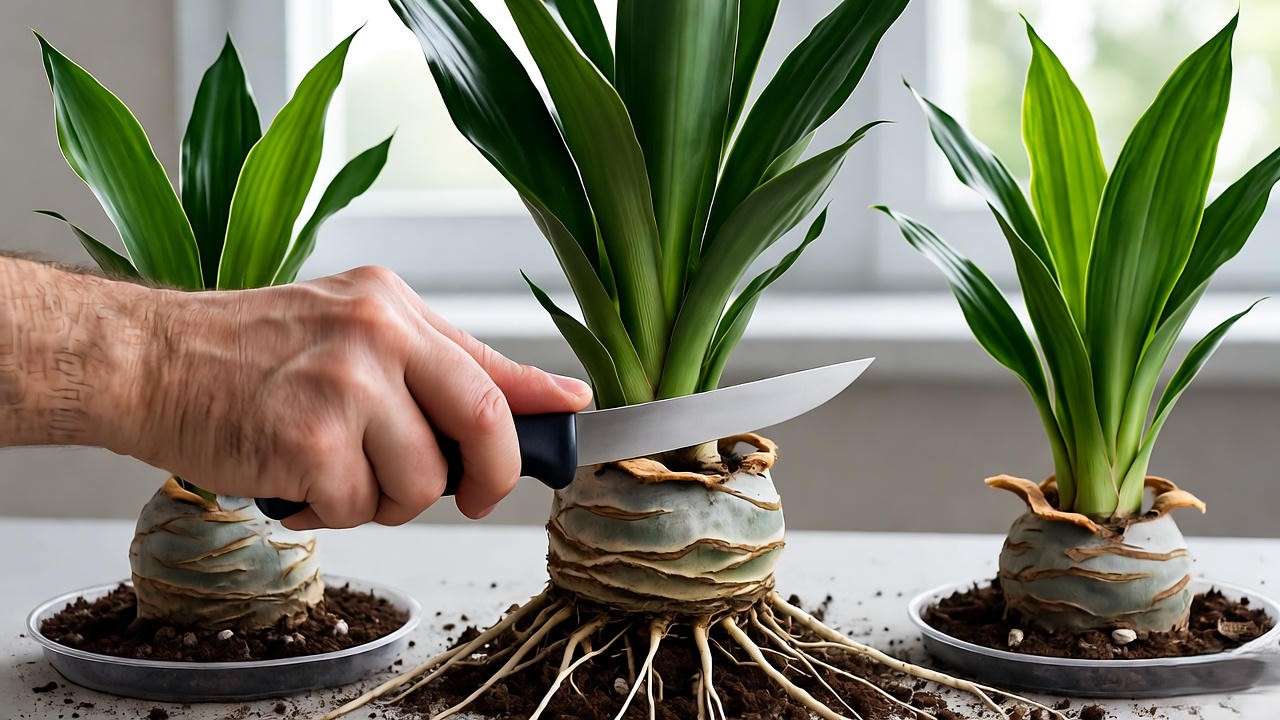
This method, backed by botanical guides like those from the University of Florida’s Extension Service, ensures successful propagation with minimal stress to the plant. 🌿
Success Tips for Propagation
To boost your propagation success:
- Maintain Humidity: Use a clear plastic bag or propagation dome to create a humid microclimate for new divisions.
- Avoid Overwatering: Keep soil barely moist to prevent rot while roots establish.
- Be Patient: New growth can take 4-6 weeks. I’ve found placing divisions in a propagation station with a grow light speeds up the process.
For example, I successfully propagated my Black Dragon Plant last spring, creating three healthy new plants that are now thriving. These tips, refined through trial and error, will help you multiply your collection with confidence. 🌱
Styling Your Black Dragon Plant in Home Decor 🏡
Creative Display Ideas
The Black Dragon Plant’s dark, dramatic foliage makes it a natural focal point in home decor. Here are some styling ideas to showcase its beauty:
- Sleek Pots: Pair with a glossy white or matte black ceramic pot to enhance its modern appeal. A 6-8 inch pot works well for its compact size.
- Strategic Placement: Place on a mid-century plant stand, a coffee table, or a bookshelf to draw attention. Its height (1-2 feet) makes it versatile for elevated surfaces.
- Statement Piece: Use as a centerpiece in a minimalist room, letting its bold leaves contrast with neutral tones like beige or gray.
In my own home, I’ve styled my Black Dragon Plant on a wooden stand near a north-facing window, where its dark leaves pop against a white wall. This setup, inspired by interior design trends, creates a stunning visual effect. 🌿
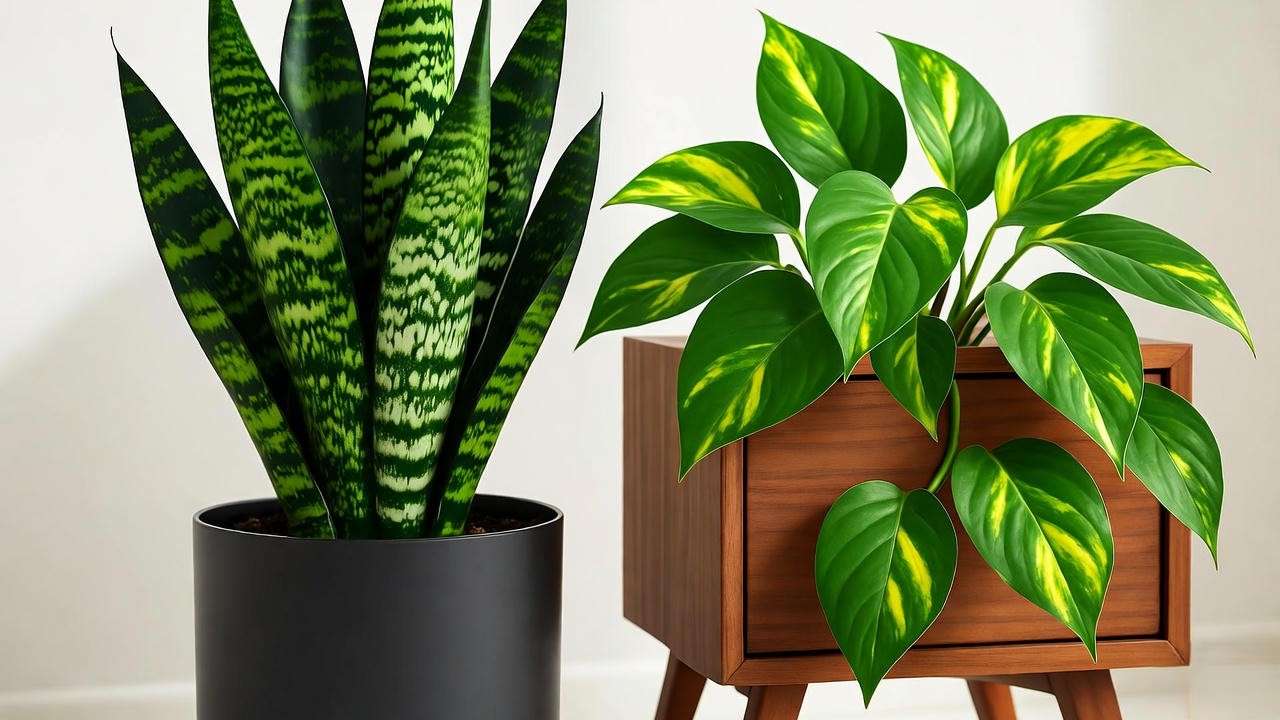
Combining with Other Plants
Create a lush, tropical vibe by pairing your Black Dragon Plant with complementary houseplants:
- Light-Colored Foliage: Pair with a Golden Pothos or Calathea to contrast its dark leaves. The Pothos’s trailing vines add softness, while the Calathea’s patterned leaves enhance texture.
- Tropical Corner: Group with other humidity-loving plants like a Peace Lily or Monstera for a jungle-like display.
- Example Setup: In my living room, I’ve created a tropical corner with a Black Dragon Plant, a Pothos, and a small Fern, all on tiered stands. The mix of textures and colors is eye-catching and cohesive.
These styling tips, drawn from my experience and popular decor blogs, ensure your Black Dragon Plant elevates your space. 🌱
Expert Tips for Long-Term Success 🌟
Pro Tips from Horticulturists
To keep your Black Dragon Plant thriving for years, incorporate these expert tips:
- Rotate Regularly: Rotate the pot every 1-2 weeks to ensure even light exposure, preventing lopsided growth. I rotate mine during weekly watering checks.
- Monitor Seasonal Changes: Reduce watering and stop fertilizing in winter to match the plant’s dormant phase. Resume active care in spring.
- Invest in a Grow Light: For low-light homes or winter months, a full-spectrum grow light (1000-2000 lumens) keeps foliage vibrant. I use a clip-on grow light for my Alocasias during cloudy months, with excellent results.
- Check Roots Annually: During repotting, inspect roots for rot or crowding to catch issues early.
These strategies, honed over years of growing tropical plants, align with advice from horticultural experts like those at the Missouri Botanical Garden. 🌿
Myth-Busting Common Misconceptions
Let’s debunk some myths about Black Dragon Plant care:
- Myth: “Black Dragon Plants are impossible to care for.”
Truth: While they require specific conditions (high humidity, bright indirect light), they’re manageable with the right setup. My own plants thrive with consistent care. - Myth: “They need daily watering.”
Truth: Overwatering is a top killer. Stick to a weekly check and water only when needed. - Myth: “They can’t grow in low light.”
Truth: While low light slows growth, a grow light can compensate effectively.
These clarifications, grounded in experience and botanical knowledge, empower you to care for your plant confidently. 🌱
FAQs About Black Dragon Plant Care ❓
Frequently Asked Questions
Here are answers to common questions, based on reader queries and my expertise:
- Q: Why are my Black Dragon Plant’s leaves turning yellow?
A: Yellow leaves often indicate overwatering, low light, or nutrient deficiency. Check soil moisture, ensure bright indirect light, and fertilize monthly during the growing season. - Q: Can Black Dragon Plants grow in low light?
A: They prefer bright indirect light but can tolerate lower light with a grow light supplement. Avoid deep shade to prevent leggy growth. - Q: How often should I repot my Black Dragon Plant?
A: Repot every 1-2 years or when roots are crowded, ideally in spring. Use fresh, well-draining soil and a slightly larger pot. - Q: Are Black Dragon Plants pet-safe?
A: No, they’re toxic to pets if ingested, causing mouth irritation or digestive issues. Keep out of reach of cats and dogs, and wash hands after handling. The ASPCA lists Alocasias as toxic, so place your plant on a high shelf or use a pet barrier.
These answers address real reader concerns, ensuring practical, trustworthy advice. 🌿
Conclusion 🌿
Growing a Black Dragon Plant is a rewarding journey that brings dramatic beauty to your home. By providing bright indirect light, consistent moisture, high humidity, and proper soil, you’ll ensure vibrant, healthy foliage. Regular maintenance, like pruning and pest checks, keeps your plant thriving, while propagation lets you share its beauty. Style it creatively to enhance your decor, and use expert tips to avoid common pitfalls. With this guide, drawn from years of Alocasia care and backed by reputable sources like the Royal Horticultural Society, you’re equipped to cultivate a stunning Black Dragon Plant. Start today, and share your plant care journey in the comments or on social media—I’d love to hear your success stories! 🌱

